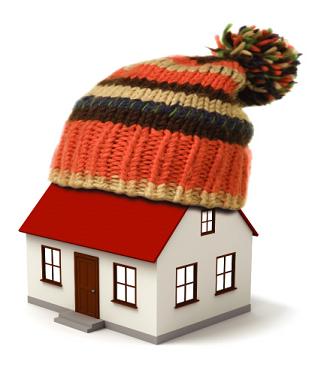
Tips for Preparing your home for Winter
Here are some simple but effective tips to keep the property well maintained and keep costs down.
Pruning trees
Prune any tree branches well clear of your house and garden fence to prevent them from falling onto your home. Trees and shrubs growing in close proximity to power lines are a safety risk and can cause fires, blackouts or power surges. Foliage and branches must be kept clear of power lines and any electricity infrastructure.
If trees are touching or in close proximity to power lines, contact your local council to seek advice or hire an tree removal specialist to do the work. Check if punning is safe to do yourself before pruning tree branches or foliage, look around you for overhead powerlines.Pruning should be done before trees and shrubs grow to within one metre in any direction of power lines. Avoid pruning in high winds secure your gardens and yards make sure any loose objects in your yard, such as garden furniture, are secured so they won’t be blown around.
Roofs and Tiles
Look for damaged, loose or missing tiles on your roof that may leak during winter’s storms. Not something easily done yourself but tiles and ridge capping should be checked from time to time to make sure there are no broken tiles or dislodged ridge capping that will allow the rain in. Check all your valleys and flashings for blockages and rust, as well as checking whether the size of the flashing can cope with the water volume, especially in heavy downpours of rain. Tin roofs should be checked anywhere leaks can occur at seams, fasteners, ridge caps, ridge vents, flashings, valley gutters and skylights.
Repointing is the process of repairing damaged mortar in brick work, masonry or roof tiling. Broken, cracked or otherwise damaged mortar is the primary entry point for moisture into the home. Once inside, the moisture continues to do damage, so repointing is a necessary part of home maintenance.
Leaky roofs
During a downpour, climb into the roof space to look for leaking around chimneys, vents and skylights. Scan the underside of the ceilings for water stains.If need be, hire a handyman to repair a few tiles or a roofer for a larger section.
Ceiling Fans
If your ceiling fan has a reverse switch, use it to run the fan’s blades in a opposite direction to summer after you turn on your heat. The fan will produce an updraft and push down into the room heated air from the ceiling (remember, hot air rises).
This is especially helpful in rooms with high ceilings and it might even allow you to turn down your thermostat by a degree or two for greater energy savings.
Clean gutters
Once the leaves fall, remove them and other debris from your home’s gutters by hand, by scraper or spatula, and finally by a good hose rinse so that winter’s rain can drain.
As you’re hosing out your gutters, look for leaks and misaligned pipes. Also, make sure the downpipes are carrying water away from the house’s foundation, where it could cause flooding or other water damage. Also make sure the downpipes are also free of debris. The rule of thumb is that water should be at least 3 metres away from the house check for damp and mould in bathrooms and cupboards reduce Condensation dampness by ensuring you have ceiling insulation to end simple cases of condensation dampness. Dry clothes outdoors whenever possible or use well-ventilated rooms.
Make sure air vents are not blocked. Keep furniture further away from the walls to improve air flow in the room. Close kitchen and bathroom doors to prevent steam travelling into colder rooms.
Insulate for a warmer winter
Insulating your home can cut your heating costs by up to 30 per cent and keep your home toasty in winter. Insulation is measured on an R-rating scale the higher the rating, the better the thermal performance, so you save more energy. Ceiling insulation prevents heat escaping through the roof, improves energy efficiency and in turn reduces greenhouse gas emissions. Wall insulation is another option and can be installed within wall cavities, stud frames and on the inside or outside of walls. Insulating or heating your floors can also improve home heating, as can placing rugs on bare floors.
Winter storms can sometimes move the insulation around in your roof to the point where it is not functioning correctly. From time to time check that the batts (Insulation panels) are lying flat and are in place, that any blow in insulation has not blown to one side of the roof space, and if so spread the insulation around so there is even coverage. Please be aware of electric cabling whilst attending to this matter or organise a professional insulation person to attend.
Most doors have a gap between the bottom of the door and the floor .This gap allows an enormous amount of heat to escape from a room and for the cold outside air to be blown into a room, especially the front door. A simple door sock or even a rolled up towel placed over this gap will help keep the heat inside a room .
Heating a whole house is more expensive than heating just the rooms you want to use, so ensure all unused rooms are kept closed .
Windows that are not shut tightly will let volumes of hot air escape and cold air in. Make sure these windows are shut tight and that curtains and blinds are drawn.
Dampness in the home
In the cooler months, dampness can be a problem, especially with older homes.A damp home can result in mould and mildew, paint discolouration as well as affecting your health.
Three things will help you fight dampness: insulation, heating and ventilation.
Chimneys
If you have one, ensure your chimney is cleaned and inspected before winter. Burning wood releases volatile gases that cool and condense on the inside of the chimney, forming sticky, smelly, highly flammable creosote. Allow enough of it to build up, and you run a risk of a chimney fire. Also make sure that the chimney is capped with screening to keep out rodents.
Check smoke alarms
This is a great time to check the operation and change the batteries on your home’s smoke detectors. Detectors should be replaced at least every 10 years and tested every year. Check to see that your fire extinguisher ( if you have one) is still where it should be, and still works.
Prepare your pool for the cool weather
Winter can play havoc with your swimming pool, so it’s important to adequately winterise your pool to keep it free from debris and algae. Give the walls and floor of the pool a good scrub, vacuum the entire pool and empty the pump’s lint basket to keep it free of debris. Don’t forget to add a secure pool cover to keep the pool free from debris. A pool maintenance company can help take the stress out of winterising your pool.






